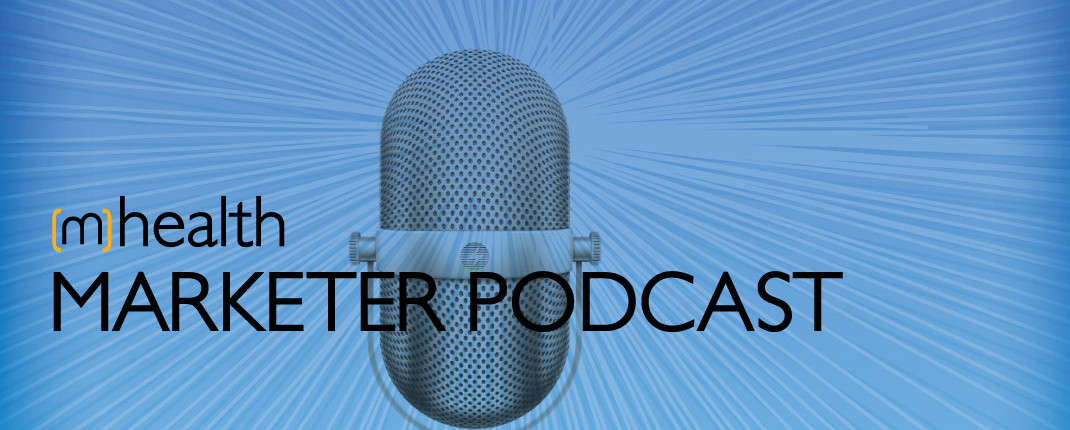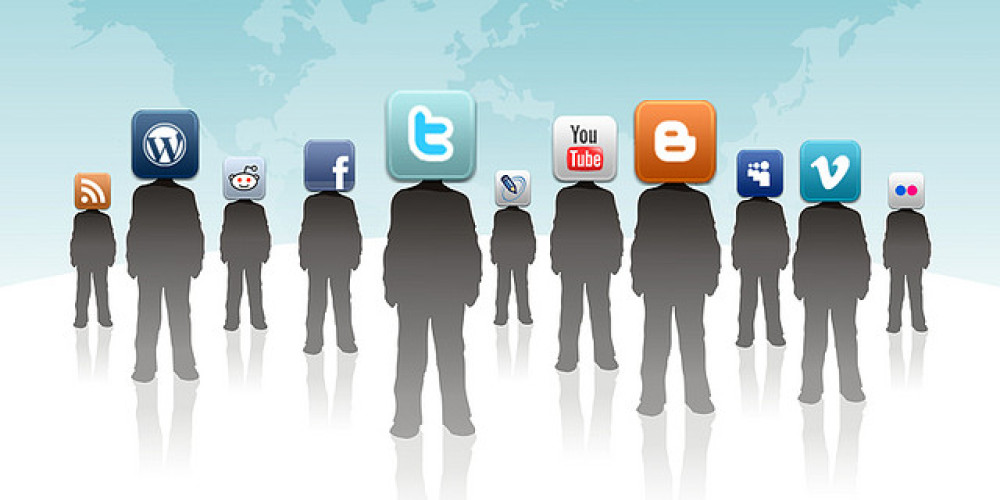 #015- Digital Health Social Media: Twitter and Facebook Best Practices [ 8:55 ] Play Now | Play in Popup | Download
#015- Digital Health Social Media: Twitter and Facebook Best Practices [ 8:55 ] Play Now | Play in Popup | DownloadTwo of the largest Social Media platforms are Twitter and Facebook. Each of these networks offer benefits and drawbacks for digital health marketing. Today we’ll look at Twitter and Facebook to help you determine if either are a fit for your marketing, and if so, how to get the most out of them.
About This Show:
Each Wednesday, Sam Stern, founder and Chief Marketing Technologist at Modallic, an mHealth marketing and brand development firm reveals his winning Mobile, Digital and healthcare IT marketing strategies, shares real life Mobile Health marketing success stories, and offers breakthrough marketing tips and tactics so you can lead the field with your Mobile Health and healthcare IT solutions.
Discover how to craft compelling stories to open doors with key health care system decision makers. Understand how an agile marketing mindset and approach positions you to create a profitable, sustainable business.
Gain insights into Mobile Health and healthcare IT marketing strategy, how to tell your unique mHealth and healthcare IT marketing story, creating your mHealth buyer personas, how to integrate an agile marketing process, mobile health and digital health brand development and market positioning, and learn what really works in attracting and landing mobile health and healthcare IT clients.
Show Notes:
If you roam around any marketing sites online, you’ll find an overwhelming amount of articles, guides, and resources on why and how to use Twitter and Facebook. Today, I’d like to break all this down and simplify it so you can decide if Twitter and or Facebook is worth your time and resources.
First, let’s look at Twitter…
Why Use Twitter for Digital Health Marketing?
Currently, it’s estimated there are 550 million Twitter users. Twitter is the ultimate platform for sharing and promoting links, and short burst real-time engagement and interaction. It offers the opportunity to build an engaged and relevant community, and can drive targeted traffic to your website. Think of Twitter as an listening, engagement, and connection platform.
Twitter is a two-way conversation. To use it effectively, you must first listen. Plug in mhealth, Mobile health, digital health, health IT, in Twitter Search to find out who is talking, and what they’re talking about,in your industry.
According to Gary Vaynerchuk, Twitter works best for business when you adopt a Give, Give, Give… then Ask approach. It’s an attitude of caring. Care about what your prospects and clients are thinking and talking about. Give them answers and deliver value rather than first pushing your solution upon them.
Twitter isn’t a broadcast medium. It’s a two-way real-time engagement network. If you want Twitter to deliver value for your business marketing efforts, this is the key mindset.
Twitter Best Practices
1. Listen First- Use Twitter Search to determine the conversation relevant to your business, and uncover prospects and influencers to Follow.
2. Follow Smart- Think Quality, not Quantity. Follow relevant people in the mHealth, health IT, and healthcare industry. Follow back those who Follow you so you can Direct Message them.
3. Profile Basics- Cover Image Graphic Size – 520 x 260 pixels. Logo- 80 x 80 pixels. Use a professional image and logo that presents your business brand. On the Bio, use keywords to describe what you do, who you help, and problems you solve.
4. Best Time to Tweet- 1-3 PM Monday-Friday
5. Always Reply to: Questions and negative comments.
6. Use a Tool- Hootsuite or Tweetdeck, to schedule Tweets throughout the day.
7. Sharing Ratio Guideline- (10-4-1)- 10 Engagements/Shares of other Sources and Links, 4 links to your blog posts, 1 Call to Action- link to your Landing Page. Remember, not push-Engage. You’re attempting to slowly build a “transfer of loyalty”, from prospects and industry influencers who don’t know you to turn them into Fans who will help to spread the word about your business.
One of the best resources of how to do this is John Locke’s How I Sold 1 Million ebooks in 5 Months. Locke, the first self-published author to sell over 1 million books on Kindle, reveals his marketing system. It’s brilliant in how he uses Twitter to build a loyal fan base.
8. How to Write the Perfect Tweet– Use this as a checklist for writing Tweets.
- Always check your spelling and grammar
- Keep it to under 100 characters to allow for Re-Tweets
- Don’t use more than two hashtags
- Avoid slang and abbreviations
- Use link shortening to keep links under 20 characters
- Use Call to Action verbs to motivate engagement
- Allow space at the end of the Tweet for comments and Re-Tweets
With a smart approach, participation on Twitter can deliver results for B2B enterprise digital health firms and end-consumer mHealth application developers.
The Case for Facebook
Facebook is the king of Social Media networks. Currently, it has 1.1 billion users. It’s the premier network for Business to Consumer brands and marketing, and can offer some value for B2B marketing efforts too. In fact, some marketers are dismissing Facebook as a B2B marketing tactic.
While Facebook may have questions, it’s tough to ignore the numbers. The keys are realistic expectations, efficiency, and not wasting time on Facebook. Think of Facebook as a placeholder network. Grab your space and make it public. Use Facebook to test content. If it gets any traction, consider spending more time and resources to engage on Facebook.
Facebook Best Practices
Many of the same Twitter best practices apply to Facebook also.
1. Business Page Basics- The cover image size is 851 X 315 pixels; logo size is 160 X 160 pixels. Use a cover image that matches your business brand. Complete your Business Profile with what you do, who you serve, and problems you solve. Use keywords and keyword links back to your website in the profile. Make sure you claim a Customized URL that includes your business name and primary keywords.
2. Best Time to Post- 1-4 PM Monday-Friday
3. Facebook Posting Tips- Here are the keys to getting engagement and attention on your Facebook posts:
Answer Customer questions- Mine customer questions direct from your customers, or questions prospects raise from your Twitter research
Be Brief- Keep posts to 100-250 characters. Use a Benefit” title to offer value. Always include a relevant, interesting image.
Post video answers to customer questions- Post brief videos, 1-2 minutes answering customer questions
Post as a Call to Action to your website- You want to move prospects from Facebook to your site. Think of your Facebook posts as “ads” for your website blog posts, white paper and guide downloads, and webinars. Offer value. Give people a reason to click through to your site.
Tailor Posts to Buyer Personas- Post different information and use tailored calls to action for the Healthcare CIO vs. The CEO of the hospital.
Yes, Facebook, can expand your reach and help to build your digital health brand. However, consider any direct business gained as a bonus, especially if you market B2B.
I invite you to check out the Resources listed on this podcast post. Also, please download the Digital Health Social Media Guide for more information on how to use Twitter and Facebook in your marketing.
Next Week… we’ll take a look at Linkedin and Google+
Resources:
Digital Health Social Media Marketing: Twitter Best Practices
How to Write the Perfect Tweet
How I Sold 1 Million ebooks in 5 Months
Should I Use Facebook For My B2B Marketing Strategy?
The Perfect mHealth Facebook Business Page
The Perfect Facebook Business Page Post for mHealth Marketing
Will You Help Me Get This Message Out There?
Want to get more tips and strategies for marketing your digital health firm? There are three ways you can enjoy these tips and strategies, share them with friends, and help me grow this movement to end the lack of innovation in healthcare:
Sign up for this podcast on iTunes. Click here to subscribe to the podcast on iTunes.
Subscribe to this podcast through the Podcast app on your iPhone or Android phone (free from the app store).
Leave a review — Share an honest sentence or two about the show on the iTunes page and give it a star rating (this makes a HUGE difference in helping others find the show).
Share the Podcast — Share this episode with friends and colleagues. An easy way to do that is by using the social media buttons down below.
Finally, if you have a question you’d like answered on a future show — or if you have any feedback in general — please let me know: sstern@modallic.com
Thanks again for your support!








2 thoughts on “#015- Digital Health Social Media: Twitter and Facebook Best Practices”